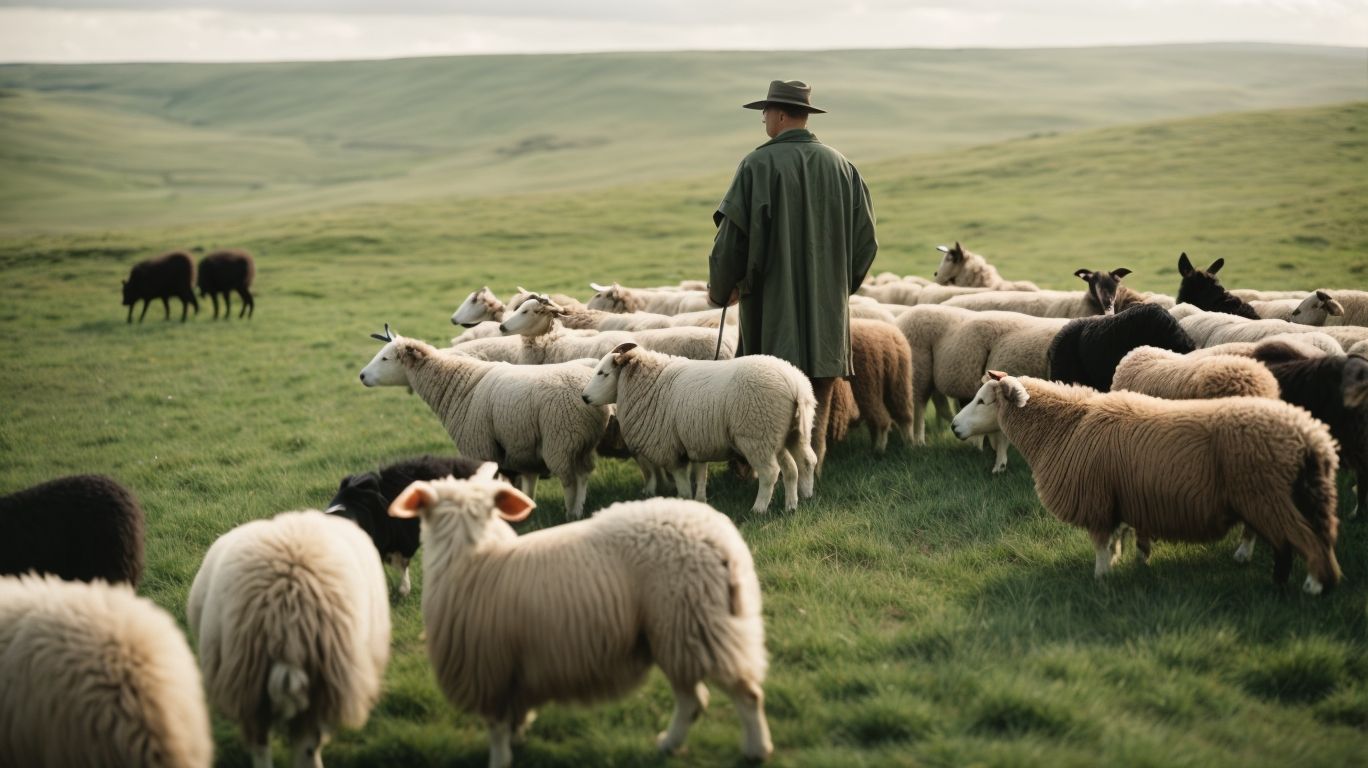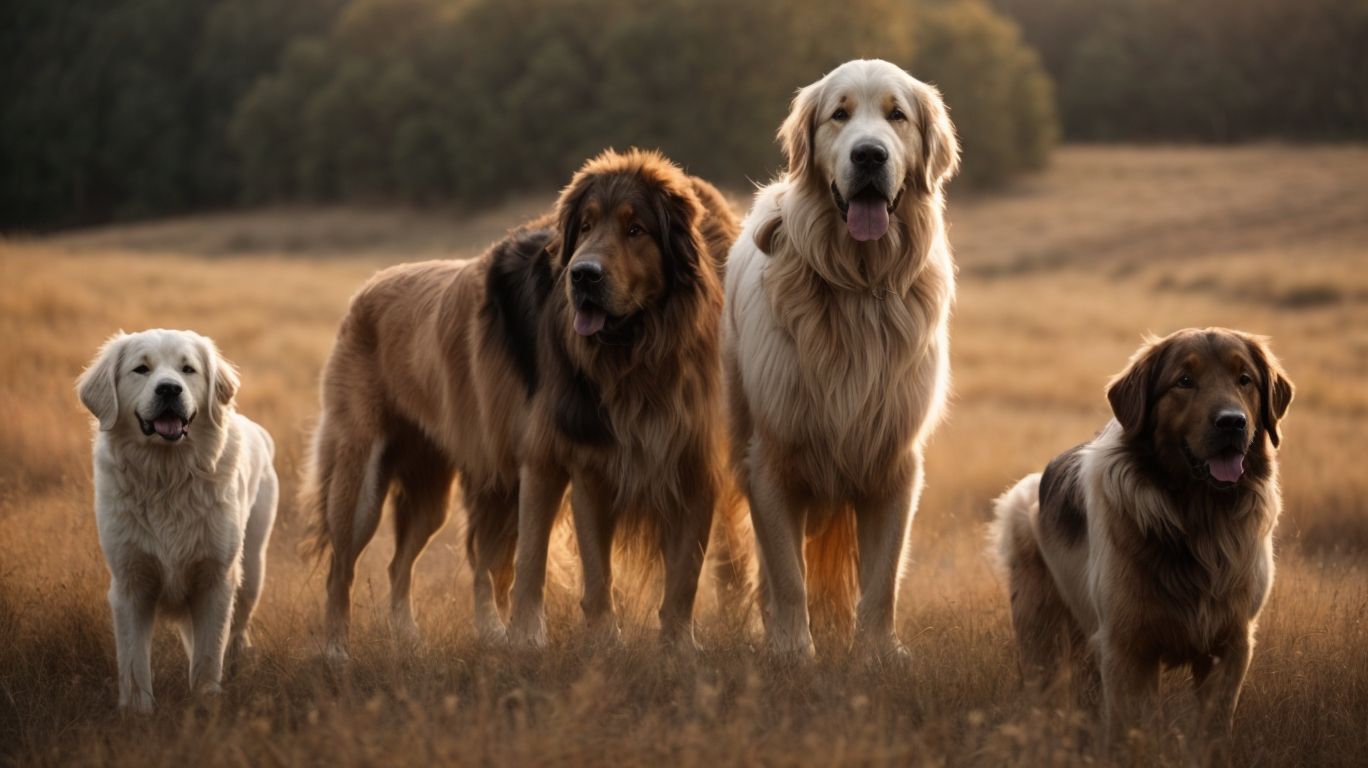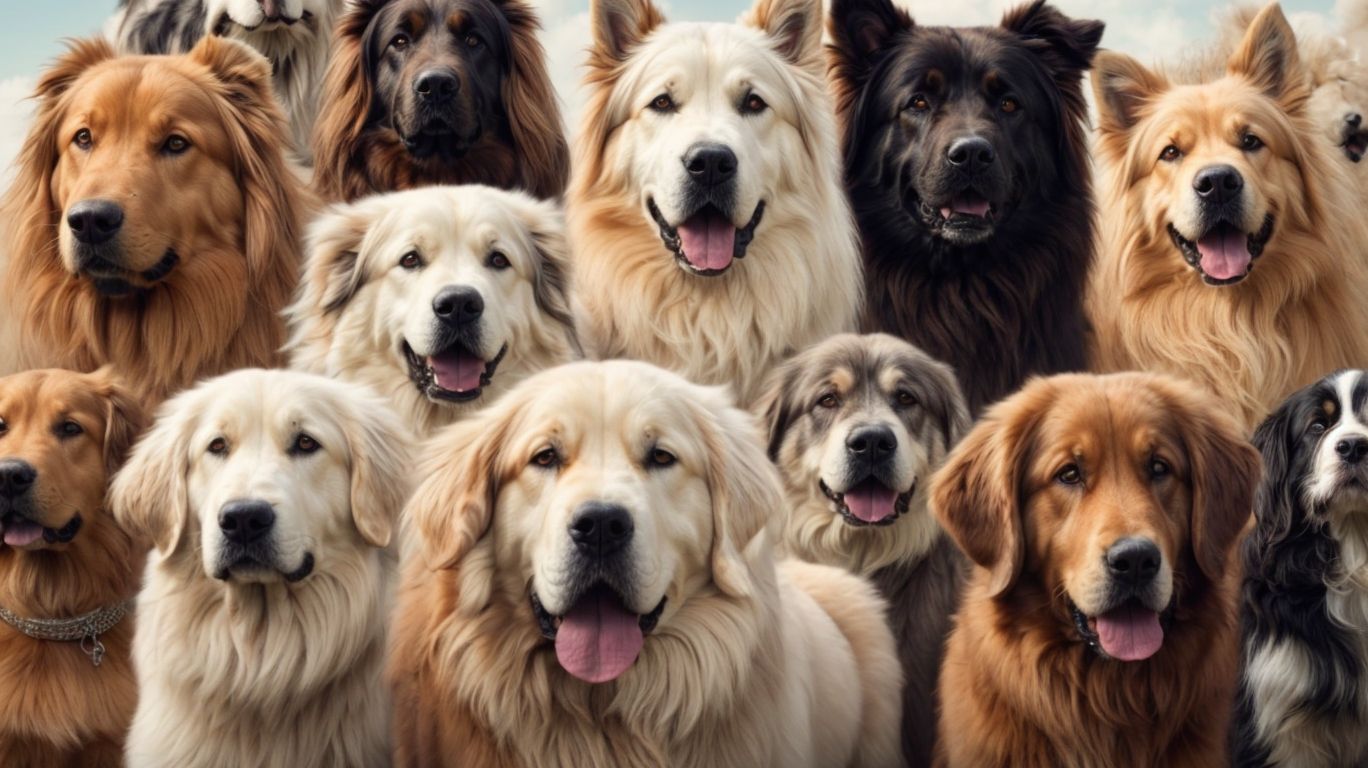
Shepherding Success: Mastering Sheep Herding Dog Commands
Welcome to our comprehensive guide on mastering sheep herding dog commands. In this article, we will dive deep into the world of sheep herding, exploring what it is, the different breeds of sheep herding dogs, the basic commands they need to know, and how to train them effectively. Whether you are a novice looking to train your first sheepdog or an experienced handler seeking to refine your skills, this article will provide valuable insights and practical advice to help you achieve shepherding success.
From understanding common mistakes in training to mastering the commands through consistent practice, we’ve got you covered. So, let’s embark on this journey together and unleash the full potential of your sheep herding dog!
What Is Sheep Herding?
Sheep herding, also known as sheepdog herding, is an essential aspect of livestock management, particularly in farming and ranching. It plays a crucial role in safely moving and directing sheep and other livestock, ensuring their well-being and productivity. Herding dogs, such as Border Collies and Australian Shepherds, are specifically trained for this purpose, using their natural instincts and intelligence to help with gathering, driving, and controlling the movement of the flock.
Livestock guardian dogs, like Great Pyrenees and Anatolian Shepherds, also play a vital part in protecting the flock from predators while they graze in pastures or open range. Herding trials provide a platform for herding dogs to showcase their skills and agility in managing livestock, demonstrating the practical application of their training and abilities.
What Are Sheep Herding Dogs?
Sheep herding dogs, also referred to as working dogs, are canines specifically trained for herding behavior, obedience training, and livestock management.
Their natural herding instincts make them adept at controlling and moving herds of sheep, using their intelligence, agility, and athleticism to efficiently guide the livestock. Obedience training is crucial for developing their responsiveness to commands, enabling shepherds to direct their movements and modify herding behavior as needed. These dogs have a close association with shepherds, working in tandem with them to ensure the safety and productivity of the flock. They play a vital role as livestock guardian dogs, protecting the herd from predators and potential threats during herding activities.
What Are The Different Breeds Of Sheep Herding Dogs?
Sheep herding dogs encompass various breeds, including the Border Collie and Australian Shepherd, both renowned for their exceptional herding instinct and suitability as working dog breeds.
These two breeds are known for their intelligence, agility, and remarkable ability to control and move livestock. The Border Collie, often referred to as the world’s greatest herding dog, is celebrated for its intense focus and strong herding instinct. On the other hand, the Australian Shepherd is recognized for its versatile herding style, excelling in both gathering and driving livestock.
Within the spectrum of herding dog breeds, livestock guardian dogs play a vital role in protecting the flock. Their natural protective instincts, combined with their gentle nature, make them invaluable assets in keeping the flock safe from predators.
What Are The Basic Commands For Sheep Herding Dogs?
The basic commands for sheep herding dogs are fundamental to their training, encompassing essential herding commands crucial for effective sheepdog training.
These commands serve as the primary means of communication between the shepherd and the herding dog. Voice commands such as ‘Come By’ and ‘Away’ direct the dog to move clockwise or counterclockwise around the flock, while whistle commands like ‘Stop’ and ‘Walk Up’ signal the dog to halt or approach the sheep. Each command plays a vital role in controlling the dog’s actions and guiding the flock, fostering a harmonious and efficient partnership between the shepherd and the sheepdog.”
Come
The ‘Come’ command is an essential aspect of training sheep herding dogs, requiring positive reinforcement and clear leadership to instill obedience and responsiveness. It plays a crucial role in maintaining control over the dogs while they are herding.
Using positive reinforcement techniques, such as treats and praise, the shepherd can effectively communicate the ‘Come’ command, teaching the dog to return promptly when called. The shepherd’s leadership is also vital, as dogs look to them for guidance and direction. By establishing themselves as the pack leader, shepherds can convey the ‘Come’ command in a way that the herding dog understands and respects.
Stay
The ‘Stay’ command forms the foundation of obedience for sheep herding dogs, requiring consistent training methods and fostering trust and adaptability within the dog’s behavior.
By effectively mastering the ‘Stay’ command, herding dogs can provide invaluable support to farmers, ensuring the safety and controlled movement of livestock. Various training methods, such as positive reinforcement, consistent practice, and gradual increases in distance and duration, are essential to reinforce this command. Building a strong bond based on trust with the dog is crucial for successful ‘Stay’ implementation, as it ensures that the dog remains attentive and responsive to the handler’s cues amidst potentially challenging and dynamic herding situations.
Lie Down
The ‘Lie Down’ command is crucial for herding dogs during livestock interaction, requiring precision and finesse in executing this herding skill amidst the dynamics of working with livestock.
This command is essential as it allows the herding dog to confidently control and manage the movements of the livestock. By lying down, the dog can exert a calming presence, helping to alleviate stress and ensure the safety of the animals.
The precision in executing this command is vital, as the dog must do it at the right time and in the right place to effectively direct the livestock. Successful implementation of the ‘Lie Down’ command contributes to efficient livestock management and facilitates smooth herding operations, ultimately benefiting both the animals and the farmers.
Walk Up
The ‘Walk Up’ command is vital in herding trials, requiring problem-solving abilities and strategic decision-making from the herding dogs as they advance in managing the flock.
This command requires the dogs to approach the livestock confidently and calmly, without causing unnecessary stress to the animals. It exemplifies the dogs’ ability to assess the situation, judge the appropriate distance and speed, and adjust their movements according to the behavior of the flock.
Through the ‘Walk Up’ command, herding dogs showcase their intelligence in understanding the optimal way to influence and guide the livestock, demonstrating their unique problem-solving skills in real-time, dynamic situations.”
Away
The ‘Away’ command showcases the agility, precision, and coordination of sheep herding dogs as they maneuver in directing the flock away from a specific area or towards a designated direction.
This command requires significant skill as the dog must carefully assess the flock’s position, calculate the optimal trajectory, and make split-second decisions to ensure the smooth movement of the flock. The precision in the dog’s movements is crucial as it determines the effective execution of the command, guiding the sheep with finesse and accuracy. The synchronized movements of the dog and the precise communication with its handler demonstrate the remarkable abilities of herding dogs in fulfilling their role as expert flock directors.
That’ll Do
The ‘That’ll Do’ command signifies the culmination of a herding task, emphasizing the cooperation, loyalty, and effective communication between the shepherd and the herding dog.
It serves as an essential signal that the dog has effectively completed the task at hand and is ready to return to the shepherd. This command showcases the deep connection and understanding between the two, as the dog looks to the shepherd for guidance and the shepherd trusts the dog to carry out the task with precision.
It also demonstrates the reliance on non-verbal cues, as often in the wide open spaces of herding, verbal communication may not always be possible. The seamless execution of the ‘That’ll Do’ command reflects the years of training and dedication put into developing this sophisticated partnership.
How To Train A Sheep Herding Dog?
Training a sheep herding dog involves a combination of training techniques, positive reinforcement, and the use of specific herding equipment and tools to develop effective herding skills.
Positive reinforcement is a key element in the training process, as it helps the dog associate herding behavior with positive outcomes. Herding dogs are often trained using clicker training, which involves using a clicker to mark desired behavior, followed by a reward. This method of training helps to clearly communicate to the dog which behaviors are desirable.
Specific herding equipment such as whistles and flags are used to communicate commands and signals to the dog during herding exercises, further enhancing their skills and abilities in working with livestock.”
Start With Basic Commands
Commencing herding dog training with basic commands fosters a strong working relationship, bond, and trustworthiness between the shepherd and the dog, laying the foundation for effective collaboration.
This initial stage of training establishes a framework for communication and reinforces the shepherd’s authority while nurturing the dog’s understanding of its role in herding. Through consistent practice of fundamental commands like ‘come’, ‘stay’, and ‘leave it’, the dog learns to respond promptly to the shepherd’s cues, enhancing their teamwork and ensuring safety during herding activities.
This process builds mutual respect and reliability, vital for the success of herding operations and the welfare of the flock.
Use Positive Reinforcement
Employing positive reinforcement in sheep herding dog training enhances the leadership, focus, and responsiveness of the dog, reinforcing desired behaviors and facilitating effective communication.
The use of positive reinforcement techniques such as praise, treats, and play as rewards for specific herding behaviors motivates the dog to perform these actions consistently. Through this approach, the shepherd conveys clear signals and builds trust, fostering a strong bond with the herding dog. This in turn strengthens the communication between them, allowing for better understanding and cooperation.
Positive reinforcement not only shapes the dog’s behavior but also nurtures a harmonious working relationship, essential for successful herding endeavors.”
Practice With Real Sheep
Engaging in herding practices with real sheep provides practical experience in working with livestock, stimulating the herding behavior and promoting mental stimulation in the herding dog.
This hands-on experience allows the herding dog to develop an innate understanding of how to manage and guide the sheep, honing their natural instincts and enhancing their ability to respond to commands. The interaction with real sheep offers mental and physical challenges, encouraging the dog to think critically and react with agility, contributing to their overall mental well-being and fulfillment.
Practicing herding skills with real sheep is not only a valuable training exercise but also a deeply enriching experience for both the dog and the owner.
What Are The Common Mistakes In Training A Sheep Herding Dog?
Training a sheep herding dog may involve common mistakes such as:
- Inconsistent training methods
- Overlooking behavior modification
- Neglecting the dog’s adaptability to different herding situations
This can result in confusion for the dog as it struggles to understand its role and responsibilities. Inconsistent training methods can lead to mixed signals, hindering the dog’s ability to learn effectively.
Overlooking behavior modification can result in persistent issues that hinder the dog’s performance. It’s essential to consider the adaptability of the dog to various herding scenarios, as each environment presents new challenges. By addressing these common mistakes, trainers can help their sheep herding dogs thrive in their important role.
Inconsistent Training
Inconsistent training can impede the development of a sheep herding dog, highlighting the importance of employing consistent training methods and the shepherd’s patience in nurturing the dog’s capabilities.
This consistency is crucial for the dog to understand commands and routines, as it reinforces their learning and behavior. If the training methods fluctuate or are executed irregularly, it can lead to confusion for the dog, hindering their progress in grasping the complexities of herding.
The shepherd’s patience plays a pivotal role in establishing trust and confidence in the dog, which is essential for effective herding. Without consistent training and the shepherd’s guidance, the dog’s potential may remain unfulfilled, impacting its ability to fulfill its herding duties.
Using Negative Reinforcement
Utilizing negative reinforcement in herding dog training can undermine the principles of effective obedience training and erode the trust between the shepherd and the dog, hindering the training process.
This approach can lead to behavioral issues, diminish spontaneity and enthusiasm in the dog’s work, and ultimately compromise the harmonious partnership essential for effective herding. It creates a negative association with commands and decreases the dog’s willingness to respond promptly. Instead of building confidence and cooperation, it fosters fear and uncertainty in the dog, hindering the development of a strong and reliable working relationship.
Not Considering The Dog’s Natural Instincts
Neglecting the consideration of a herding dog’s natural instincts and innate abilities can impede the training process, overshadowing the dog’s instinctual behaviors and innate herding capabilities.
It’s essential to recognize that herding dogs have an inherent drive to control the movement of animals. By integrating this instinct into their training, it can lead to a strong foundation for obedience and agility. Neglecting these natural capabilities may result in behavioral challenges and frustrations for both the dog and the owner.
Understanding and embracing the instincts of herding breeds can greatly enhance their training experience and strengthen the bond between the dog and their human companions.”
How To Master Sheep Herding Dog Commands?
Mastering sheep herding dog commands necessitates setting clear training goals, maintaining consistency, and fostering trust and effective communication between the shepherd and the dog.
Setting clear training goals is crucial to provide a roadmap for the desired behaviors and responses from the herding dog. Consistency in training methods and commands reinforces the dog’s understanding and responsiveness.
Fostering trust through positive reinforcement and effective communication builds a strong bond between the shepherd and the dog, enhancing their teamwork and ability to effectively manage the sheep. These elements are fundamental in achieving mastery in sheep herding dog commands.
Practice Consistently
Consistent practice forms the cornerstone of mastering sheep herding dog commands, requiring a structured training plan and the shepherd’s persistence in reinforcing the dog’s capabilities.
This consistent training helps the dog develop a deep understanding of the commands, making it responsive and reliable when herding sheep. The shepherd’s persistence in reinforcing the dog’s capabilities through positive reinforcement and consistent repetition solidifies the dog’s understanding and execution of commands.
Implementing a structured training plan not only benefits the dog but also improves the overall efficiency of the herding process, creating a harmonious and effective partnership between the dog and the shepherd.
Learn From Experienced Handlers
Gaining insights from experienced handlers contributes to mastering sheep herding dog commands, leveraging the shepherd’s leadership and expertise in overcoming various training challenges.
They impart valuable knowledge on reading the dog’s body language, understanding flock dynamics, and fine-tuning the timing and precision required for effective herding. Learning from seasoned handlers fosters a deep appreciation for the symbiotic relationship between the shepherd and their canine companion, instilling a sense of trust and respect that is essential for fostering a cohesive and efficient team.
Through their guidance, handlers can help shepherd dogs develop the discipline and skill set necessary to excel in the demanding yet rewarding practice of sheep herding.”
Understand Your Dog’s Individual Needs
Recognizing and addressing your sheep herding dog’s individual needs is crucial in mastering commands, nurturing the bond between the shepherd and the dog, and adapting training methods to suit the dog’s unique capabilities.
Understanding that each sheep herding dog possesses its own temperament and learning style is fundamental. By tailoring commands and training techniques to align with these distinct traits, the shepherd not only empowers the dog to perform its duties effectively but also deepens the mutual understanding and trust between them. This personalized approach fosters a stronger connection between the shepherd and the dog, laying the foundation for a harmonious and successful herding partnership.




No Comments